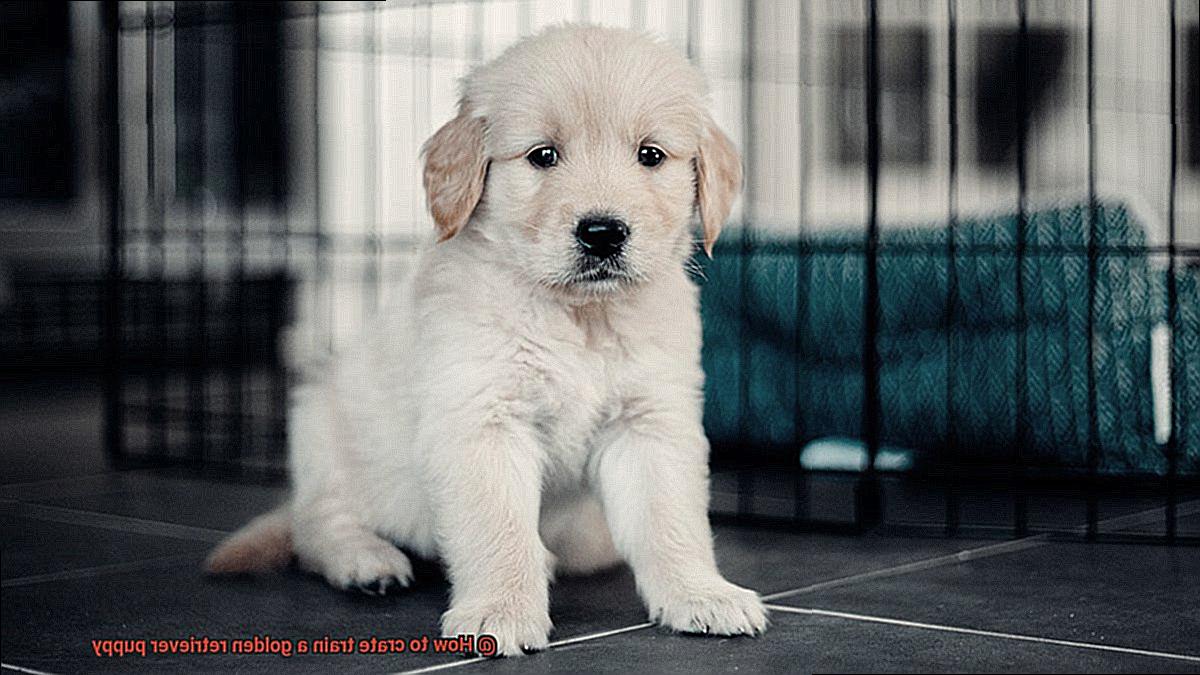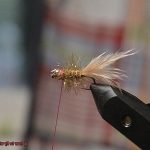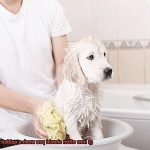Congratulations on becoming the proud owner of a Golden Retriever puppy. These adorable furry friends are known for their loyalty and affection towards their owners, but they also require proper training to ensure they grow up to be well-behaved dogs. One vital aspect of puppy training is crate training, which can not only provide a safe and comfortable space for your pup but also help with potty training and prevent destructive behavior.
But where do you begin with crate training your Golden Retriever puppy? Fear not, we’ve got your back. In this comprehensive guide, we’ll take you through the step-by-step process of crate training your furry pal. From selecting the perfect size and type of crate to introducing your dog to the crate and creating a positive association, we’ll cover everything you need to know.
But that’s not all – we’ll also share some helpful tips and tricks for making the crate training process as smooth and stress-free as possible for both you and your pup. So get ready to become a pro at crate training in no time.
Choosing the Right Size Crate
Contents
Well, before you begin, it’s important to select the right size crate to ensure your pup’s comfort and success. After all, a properly sized crate will be their safe haven and a place they can retreat to when feeling overwhelmed or sleepy. In this blog post, we’ll dive into critical factors to consider when choosing the perfect crate for your furry friend.
First and foremost, the crate should be spacious enough for your puppy to stand up, turn around, and lie down comfortably. But be careful not to go too big as this can lead to your puppy using one end of the crate as a bathroom and the other as a sleeping area. To determine the appropriate size, take into account your puppy’s estimated adult size and weight. You don’t want to invest in a crate that will be too small for your little buddy once they reach their full size.
Another crucial factor to consider is how long your pup will spend in the crate. If you plan on crating your furry friend for extended periods like during the workday, you may want to consider a larger crate that has enough room for food and water bowls and toys. This way, your pup will have everything they need while in their space.
Now let’s talk about the types of crates available: wire, plastic, and soft-sided crates. Wire crates are popular because they provide excellent ventilation and visibility for your puppy. Plastic crates offer more privacy and security while soft-sided crates are lightweight and easy to transport but may not be as durable as other types of crates. The choice ultimately depends on your preferences and those of your furry friend.
After selecting the right size crate, it’s time to introduce your pup to it. Place the crate in a central location in your home where your puppy can see and hear you. Leave the door open and encourage your pup to explore the crate by placing treats or toys inside. You can also toss treats inside and let your puppy retrieve them on their own.
It’s essential to keep in mind that puppies have small bladders and will need frequent potty breaks. Take your pup outside immediately after they come out of the crate to prevent accidents. As your puppy gets older and can hold their bladder for longer periods, you can begin leaving them in the crate for short periods while you run errands or go to work.
Introducing Your Puppy to the Crate
Are you ready to crate train your adorable golden retriever puppy, but unsure where to begin? Fear not, as I am here to guide you through the process of introducing your furry friend to its crate in a positive and effective way.
First things first, choosing the right crate for your puppy is crucial. Consider factors such as size, duration of crating, and type of crate before making a purchase. Once you have your crate, it’s time to introduce your puppy to its new cozy abode.
Start by placing the crate in a room where your puppy spends most of its time, such as the living room or kitchen. Leave the door open and put some soft bedding inside. This will help your furry friend associate the crate with comfort and safety.
Now comes the fun part – encouraging your puppy to explore the crate. Place some treats or toys inside and allow your pup to enter the crate at its own pace. Avoid forcing it inside, as this can create fear and anxiety. Once your puppy enters the crate, shower it with praise, treats, and affection.
Gradually increase the amount of time your puppy spends in the crate with the door closed, starting with just a few seconds and gradually increasing over time. Remember that the crate should never be used as punishment for your pup. It should always be a positive experience for your furry friend.
During the early stages of training, avoid leaving your puppy in the crate for extended periods. Puppies have small bladders and need frequent potty breaks, so it’s important to take them out regularly. As your pup becomes more comfortable with its crate, you can gradually increase the duration of crating.
Making the Crate a Positive Experience
Crate training your golden retriever puppy doesn’t have to be a daunting task. One of the keys to success is making the crate a positive experience for your furry friend. Here are some expert tips on how to create a welcoming and comfortable space for your precious pup.
It’s essential to introduce your puppy to the crate slowly. Begin by leaving the door open and placing treats or toys inside to encourage them to explore. Once they get comfortable with going in and out of the crate, gradually close the door for short periods while you’re in the room with them. Slowly increase the time they spend inside, but ensure they have water and toys to keep them occupied.
Remember that your puppy may whine or cry when first getting used to the crate. This is normal behavior, and it’s best to ignore it unless they need a potty break. Giving in to their cries will only reinforce negative behavior and make it harder for them to adjust to the crate.
It’s also crucial to select an appropriately sized crate. It should be big enough for them to stand up, turn around, and lie down comfortably, but not so large that they have room to use one side as a bathroom and the other as a sleeping area.
Above all, make sure your pup associates their crate with positive experiences. Never use it as a form of punishment or isolate them in it for extended periods. Instead, use positive reinforcement methods such as treats, toys, and praise when they enter or rest in their crate.
Feeding Meals Inside the Crate
Crate training your furry friend can seem like a daunting task, but feeding meals inside the crate is a vital step in creating a safe and comfortable environment for your golden retriever puppy. By doing so, you can establish positive associations with their new space and make it an enjoyable experience.
Selecting the right size crate is crucial to ensure your puppy has ample room to move around, but not so much that they have enough space to make one side their bathroom and the other their sleeping area. Once you have the appropriate crate, you can start introducing your furry friend to eating meals inside it.
Begin by placing their food bowl just inside the crate with the door open, allowing them to eat at their own pace and go in and out of the crate. Gradually move the bowl further back into the crate until it’s all the way in the back. This gradual approach will help your puppy feel more comfortable and secure in their new surroundings.

Once your puppy is comfortable eating meals inside the crate with the door open, you can start closing the door while they eat. Start with short intervals, gradually increasing the duration over time. Remember to praise your puppy every step of the way and never force them inside.
It’s important to note that puppies should not be left in their crates for extended periods of time, especially during meal times. Puppies need time to digest their food and access to water outside of the crate. Additionally, using the crate as a punishment or leaving your furry friend inside for too long can lead to anxiety and behavioral issues.
Increasing Time Spent in the Crate
An essential part of crate training involves gradually increasing the time your furry friend spends in their cozy den. By doing so, you’ll help them become accustomed to being alone and prevent separation anxiety.
To begin, introduce your pup to the crate and give them a few days to adjust. Once they seem comfortable, you can start lengthening their crate time incrementally. Start with short intervals, such as 5-10 minutes, and gradually extend the duration over several days or weeks. This helps your puppy become familiar with the space and prevents any overwhelming feelings.
Before increasing time spent in the crate, it’s vital to make sure that your pup is calm and relaxed. If they begin to whine or bark, wait until they have settled down before opening the crate. This teaches your pup that good behavior is rewarded with freedom.
To make your puppy’s time in the crate enjoyable, provide plenty of toys and treats. This will keep them occupied and happy while they are in their crate, creating positive associations with their crate.
When leaving or returning home, avoid making a fuss. This can cause your pup to become overly anxious or excited, making it challenging for them to adjust to alone time in their crate. Remember that consistency and patience are key when increasing time spent in the crate.
Potty Breaks for Your Puppy
Puppies have tiny bladders and need frequent trips outside to relieve themselves, especially during the early stages of crate training.
A general rule of thumb is to take your golden retriever puppy out for a potty break every two hours. However, keep in mind that every dog is unique, and some puppies may require more frequent breaks. By setting up a regular schedule for potty breaks, you can help your puppy learn when it’s time to go outside and reduce the chances of accidents in their crate.
It’s also crucial to take your puppy out for a potty break immediately after they wake up from a nap, after eating or drinking, and after playtime. These are all instances when puppies are more likely to need to relieve themselves. By observing your puppy’s actions and building a routine around their needs, you can make crate training more comfortable for them.
When it comes to taking your furry friend outside for a potty break, be sure to use a designated spot in your yard or outdoor area. This will help your puppy associate that spot with potty time and make future training more manageable. Additionally, this habit will reduce the likelihood of accidents happening inside the house.
During early crate training stages, it’s best to limit your puppy’s water intake before bedtime to minimize accidents during the night. However, make sure to provide plenty of water during the day to keep your beloved pet hydrated and healthy.
Conclusion
Congratulations on bringing home your adorable Golden Retriever puppy. As you embark on the journey of training your furry friend, crate training is an essential aspect that can provide safety and comfort for your pup while preventing destructive behavior. But how do you go about crate training a Golden Retriever puppy?
First things first, choosing the right size and type of crate is crucial. You don’t want it to be too big or too small, as this could make your puppy feel uncomfortable or claustrophobic. Once you have the perfect crate, it’s time to introduce your pup to it in a positive manner.
Creating a positive association with the crate involves gradually increasing the time spent inside, feeding meals inside the crate, and providing toys and treats. However, keep in mind that puppies have small bladders and require frequent potty breaks. Establishing a regular schedule for potty breaks and using a designated spot outside can help prevent accidents in the crate.
Consistency and patience are key when it comes to crate training your Golden Retriever puppy. It’s important to remember that every pup is different, so don’t get discouraged if progress is slow at first. By following these steps and tips, you’ll be well on your way to creating a safe and comfortable space for your furry friend.
Always make sure to avoid using the crate as punishment or leaving them inside for too long. With dedication and love, you’ll have a well-trained companion by your side in no time.









